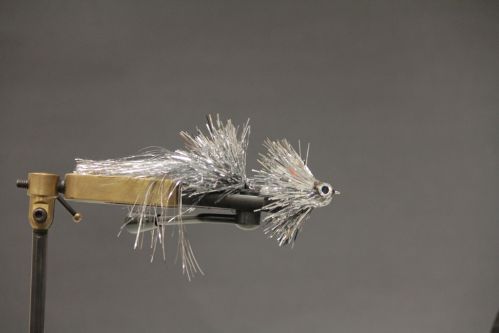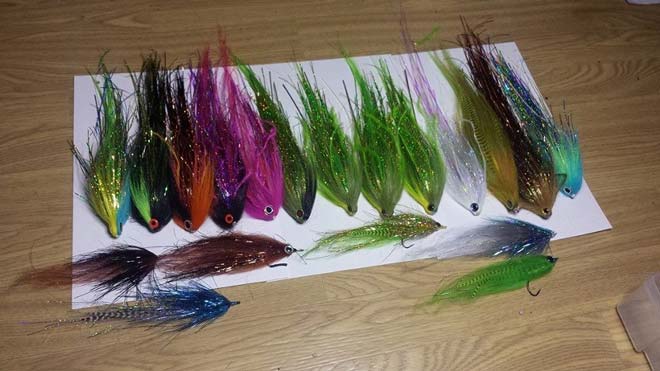
By Michael Lunde
The long Alaska winter offseason is typically spent reminiscing over summer fishing stories alongside a cozy cabin campfire. During the Christmas holidays, the majority of department stores provide customers with large discounts on a variety of decorations. At this time of the year, fly-tiers can take advantage of these discounts and purchase materials that are a fraction of the price in fly shops. Also, department stores offer similar discounts on their website inventory if traveling becomes an issue.
Tinsel is a decorative material originally derived from silver designated to specifically mimic the effects of ice or icicles. The material’s birthplace is Nuremberg, Germany, around 1610. After undergoing several production processes, manufacturers produced tinsel from a polyvinyl chloride film coated with a metallic finish and sliced into thin strips. Lead productions were seized given lead’s adverse health effects. Typically used to enhance a Christmas tree’s appearance, tinsel is an exceptional fly-tying material, as its reflective surface provides similar undulating movements to baitfish. It also incorporates the fundamental principles of baitfish physiology—propulsion, counter-shading, lateral line and morphology. Additionally, tinsel can be tied with a variety of techniques—spun in dubbing loops, reverse-tied, center-tied and standard—to create various forms of aquatic prey. Common color combinations come in pearl, silver, gold, blue and chartreuse.
The Swedes popularized and perfected the art of fly-tying with tinsel. Atlantic salmon anglers commonly used tinsel as a substitute to floss in creating the spiral affect achieved for ribbing. As new tying styles evolved, the Swedes created large baitfish streamers directly targeted towards northernpike. Modern tiers have demonstrated that both conventional and fly anglers can incorporate tinsel into the construction of jigs and flies. Tinsel jigs have been a popular presentation for lake trout for ages in Alaska and the Midwest. Today, fly fishermen can construct variations of poppers, baitfish streamers and other forage patterns, as there are limitless ideas.
Presented here, I demonstrate the steps involved in tying an articulated baitfish streamer tied out of 100% tinsel and absolutely nothing else. The tinsel is spun in dubbing loops on both the trailer and front hook to create a pure, fusi-form body that is a key physiological characteristic on most pelagic forage, such as ciscoes, whitefish and herring. Where regulations allow for multiple hooks, the main hook can be used; otherwise the front hook must become a sacrificial hook. The articulation is secured with braid unless pursuing toothy critters; then wire must be substituted. The same steps used in tying this featured pattern can also be used to tie articulated jigs, which exemplifies the versatility of systems that can be incorporated with tinsel.
In essence, tinsel is an essential material that can be utilized by fly-tying enthusiasts to create an endless array of aquatic forage our favorite gamefish consume. Although a versatile material, it creates nightmares for wives and girlfriends everywhere—clogged vacuums and dirtied carpets as seen in late-night household infomercials. Like marabou and deer hair, messes come expected. Don’t let this prevent you from expanding your imagination and horizons. Once the holiday festivities conclude, take advantage of this great opportunity and invest in Christmas tinsel. It’s a long winter.
MATERIALS:
Hook: Trailer hook is size #1/0 Gamakatsu SL12S. The front non-sacrificial hook is #2/0 Gamakatsu SL12S.
Thread: #6/0 Uni Thread or Verivas.
Articulation: 50- to 60- pound Power Pro, or 7-strand wire for toothy critters.
Body: Silver Christmas tinsel spun in dubbing loop and palmered forward.
Eyes: 7mm Living Eyes from Fish Skull.
Glue: Thin application of thick Clear Cure Goo adhesive and dried with UV light. Epoxy or Tuffleye will also suffice as substitute.
TYING STEPS:
Step 1: Start thread near end of rear trailer hook with thread perpendicular with hook point. Center-tie 8- to 15 strands of Tinsel and fold remaining back over itself. Wrap several times to secure.
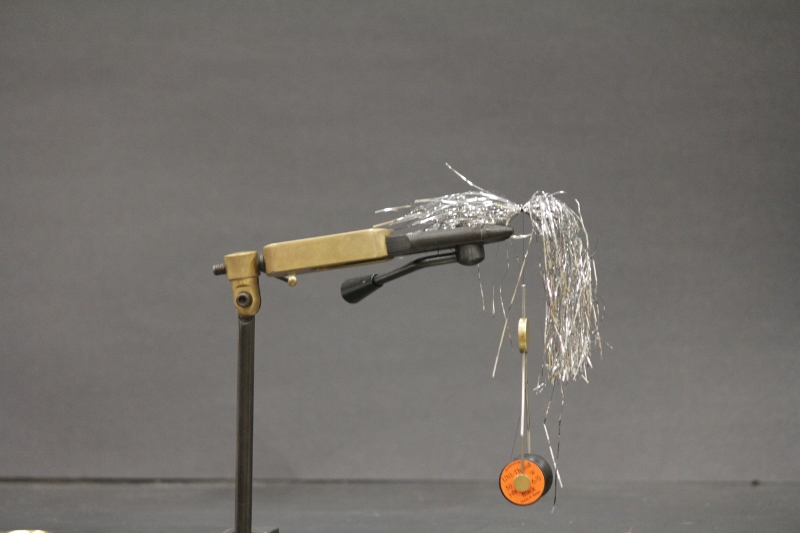
Step 2: Cut about 10- to 15 strands of tinsel of 8- to 12 inches in length. This will be done 4 separate times with each group getting substantially shorter. Make dubbing loop and insert 4 sections into dubbing loop. Spin dubbing twister and palmer forward the tinsel. Thread location should be at hook-eye. If not, dub additional tinsel.
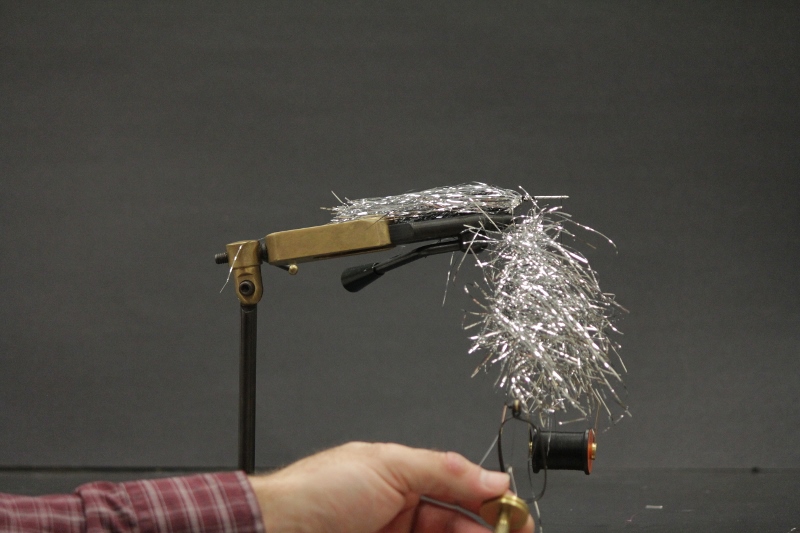
Step 3: Cut 10- to 12- inch separate section of Power Pro. Select trailer hook and insert one tag end through hook-eye until both ends are together. Thread 2 or 3 plastic beads through both ends of wire and slide them down until a small loop is formed at the bottom of the wire. Secure articulation with gel-spun thread, wrapping up and down hook-shank twice.
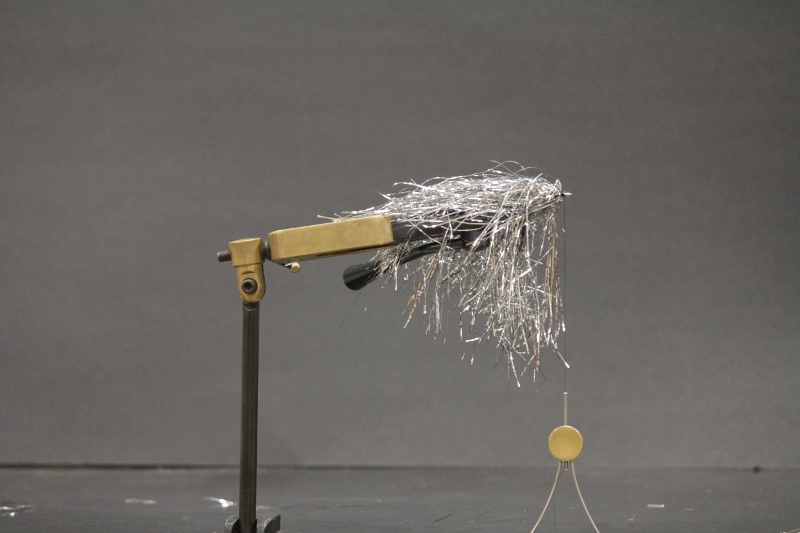
Step 4: Start new thread base near rear offront hook. Repeat
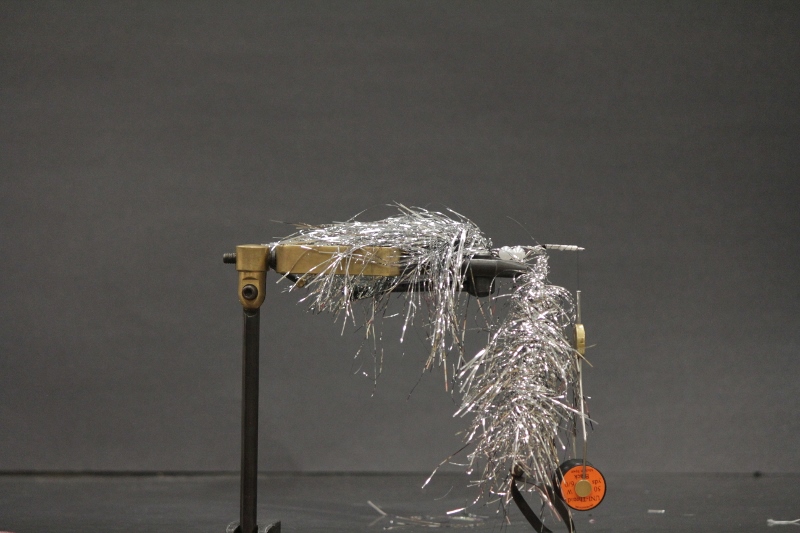
Step 2 and palmer tinsel forward. If short from hook-eye, dub additional tinsel and palmer.
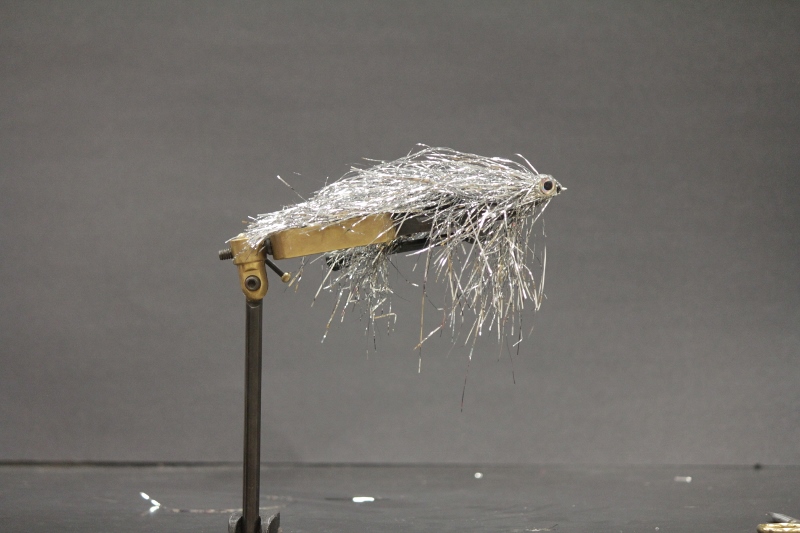
Step 5: Whip finish and apply fine layer of Clear Cure Goo. Select 3-D eyes and attach them to initial adhesive finish. Use second application of Clear Cure Goo to glue and secure eyes.
Author’s note: Each baitfish species has a unique morphology and physiology. To achieve variations in head shape and morphology, blend in either synthetics or natural hairs and furs to expand your options, as this fly tutorial was about learning various tying fundamentals. The corresponding photographs will demonstrate this creativity. Remember to leave enough tying space near the front of hook to add on extra materials when necessary.
The Crosscut Version of Articulated Christmas Tinsel Fly
MATERIALS:
Hook: Trailer hook is size #1/0 Gamakatsu SL12S. The front, non-sacrificial hook is #2/0 Gamakatsu SL12S.
Thread: #6/0 Uni Thread or Verivas.
Articulation: 50- to 60- pound Power Pro, or 7-strand wire for toothy critters.
Body: Crosscut-style Christmas tinsel.
Eyes: 10 mm Living Eyes from Fish Skull.
Glue: Thin application of thick Clear Cure Goo adhesive and dried with UV light. Epoxy or Tuffleye will also suffice as substitute.
TYING STEPS:
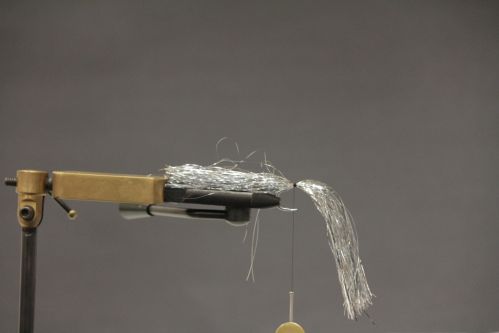
Step 1: Repeat Step 1 from above.
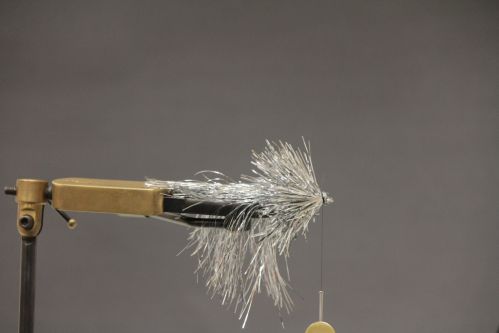
Step 2: Tie-in crosscut Christmas tinsel and palmer forward to front of hook.
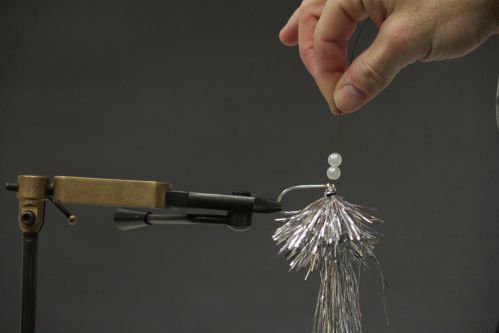
Step 3: Follow the same instructions highlighted in Step 3 from above for forming the articulation to the non-sacrificial hook.
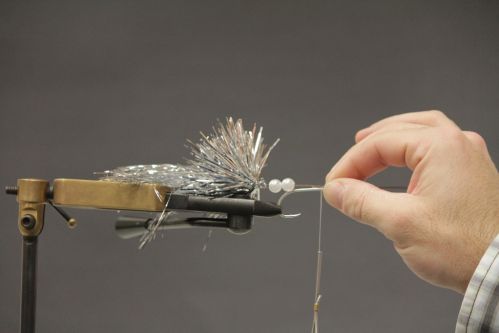
Step 4: Start new thread base near the rear of the front hook. Tie-in crosscut Christmas tinsel and palmer forward to front hook. Apply additional materials if desired to experiment with shape of fly.
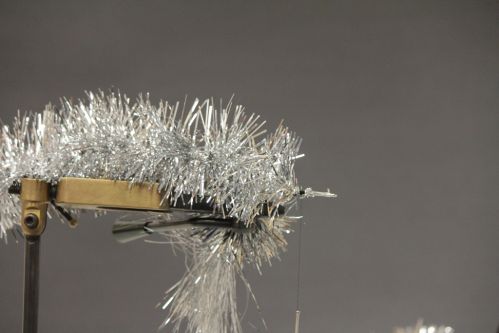
Step 5: Whip finish and apply fine layer of Clear Cure Goo. Select 3-D eyes and attach them to initial adhesive finish. Use second application of Clear Cure Goo to glue and secure eyes.
